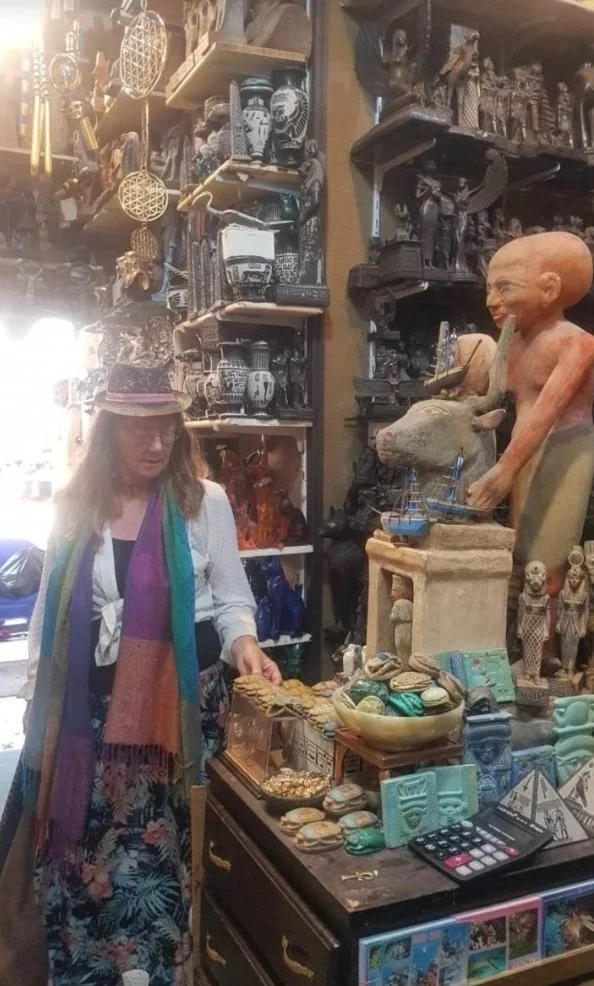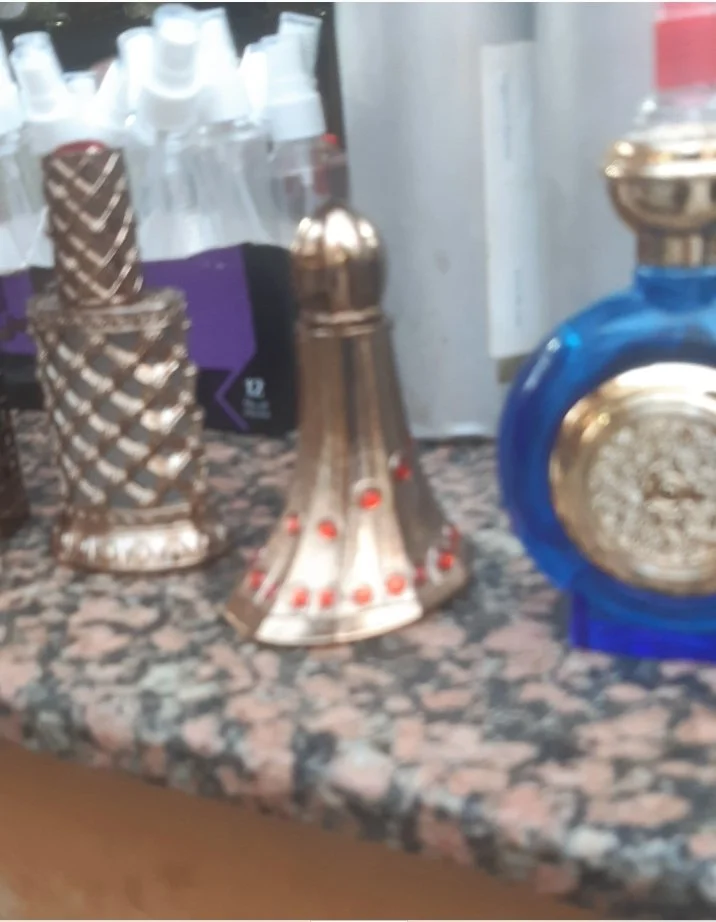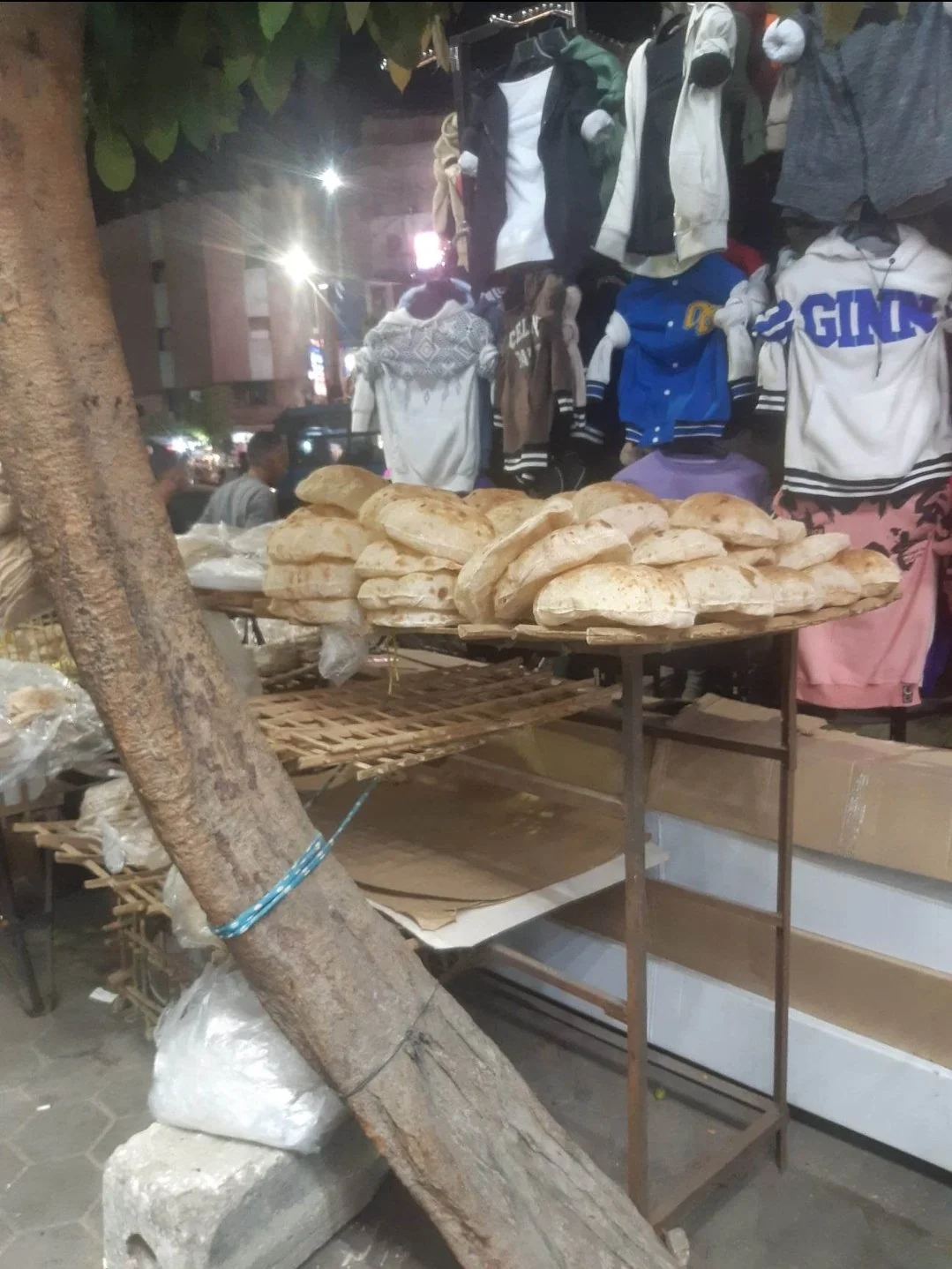Mayday! Mayday! Quest in Cairo for an Elusive Photo
“Mayday, Mayday… an incredible figure at 11 o’clock.”
“There she is again. She’s quick. She’s fast. She’s small.’
“Gotta catch her before she accelerates.”
Robin William’s character in Good Morning Vietnam, the newly arrived Adrian Cronauer, spots the girl in the hat.
In my case – an incredible sight. There it is again. It’s quick. It’s fast. Gotta catch it before it accelerates. Out with the phone, turn it on, switch to camera mode, thumb-hit the portrait instead of photo. And…
it’s gone.
Almost anything goes when it comes to transport, even in the middle of Cairo.
And so begins my quest. The chase for this photo. It starts on my first full day in Cairo – Christmas Day, as it happens. These guys are fast, and I feel like Adrain Cronauer.
To be honest, the crazy ride started the day before when we arrived, Christmas Eve. And that was why I’ve come along… Besides of course the pyramids, the Sphynx, the incredibly ancient civilization where I’ve set 2 of my stories, the fact that everything – even the concepts – is just so huge…
But knowing my friend, this will be a wild ride.
With flight delays our 6am start from Tangier does not have us in Cairo until almost midnight. A mad crazy drive across Cairo – I don’t know where to. I just sit back and wait to see what will happen next – and we arrive. I instantly recognize the place from photos he has already shown me – his old local café.
The El Horreya Cafe - catchng a little daytime sun at the beginning of its mostly night-time trade. The menu consists of: beer.
At least, café by day, bar by night.
We had dashed across Cairo for a beer.
I have been living in Morocco for 2 years. Tangier is full of cafés, but they all sell coffee and tea. Alcohol was sold in many of them, but not since the 1990s.
Here, it still is. And it is not the 250ml bottles of beer of Morocco, 2 sips and it is gone.
They are a full half litre! A decent sized drink. The café – El Horreya – is still open, and his friends are still there. (Actually, I think he said hello to everyone in that café, which isn’t small. They all know him!)
When we arrive in a new country, especially those different to our own, first impressions are often surreal because nothing is familiar. El Horreya is like many in Tangier – old and with few trimmings, though some rather nice stained glass on the windows. We get very used to the new and shiny, but these places which have that shabby look are usually the best ones – the best food, and the best company.
The first night the tired yellow and the windows with their patterns of coloured triangles looks like one of these. By the second day it is familiar, and I’m starting to realise it is typical of many cafés in Cairo. He shows me the peepholes where he and his friends would check out who was already in the café before they went in. The tables fill up in the evenings, the buzz is a comfortable one that you start to crave each day, and there is just one item on the menu – beer.
So in spite of being up since 4.30am and travelling all day, I find myself after midnight drinking beer in a café-bar. Because that is the way Cairo works. It’s not the same kind of crazy I know in Tangier – a very different brand. But things promise to be quite as crazy as I had hoped.
Some of the pretty stained windows, hiding the peepholes for a preview of which friends are already there.
But this café is also special for another reason. It was one of the centres where people collected in the 2011 revolution. Because this is Downtown Cairo, right near Talaat Harb Square and Tahrir Square. The street between them was filled with demonstrators starting on the 25th of January, 2011.
Tahir Square - normal vs 2011 during the Arab Spring. (this one obviously not one of my photos)
Most of us now live in a world that is very comfortable. Demonstrations stopped being much a part of our lives after the 1970s. From the comfort of our living rooms and behind our computer screens, hearing about demonstrations seems remote and radical to us. But we have been lucky.
In Egypt at that time, police brutality was one of the main things people were objecting to. Add to this fraud, government censorship and corruption, unemployment and escalating food prices with a government doing little to improve things for the general population and a president who had manipulated elections so his 5-year limit was by then running at 30 years with his son set as successor, the Egyptians had had enough of these conditions.
Little wonder they were ready to react.
And yet they did with a range of non-violent protests, initially against the police brutality (over the 2 ½ weeks of protests and in the aftermath 90 police stations were burnt). Their freedom cost them 846 friends who died, 6,467 injured.
But they did succeed. They toppled the government, and Egypt started to move forwards again.
Today Talaat Harb Square, Tarhrir Square, and Talaat Harb Street which connects them is busy with shops, cars, tooting horns, and the chaos that represents Cairo. The buildings are elegant, if aged, French neoclassical buildings reflecting an era of European colonialism. In an effort to claim a greater Egyptian identity, the street was renamed in 1954 after Talaat Harb, a leading economist from the early 1900s. But it is peaceful – in a kind of chaotic Cairo way.
Talaat Harb and his square.
“Mayday, Mayday… there it is again.”
How does he do that on a bicycle?
Out with my phone, turn it on, wait for the screen to clear…. And now he’s too far away. I can get no better than a fuzzy distance shot between the crowded streets. The memory on my old phone is so full half of it is no longer loading up. I shake my head. I really have to get a new one.
Well, actually, I’ve got a new one. With a friend’s help I had it in my hand the day before departure…
… and out of my hand again by the time we got to Cairo. Absconded by my guide.
Well, to be fair, he had come up with the perfect arrangement for us. He got us a good wifi sorted onto it, and between us we ran both our laptops and both our mobiles from it. A perfect arrangement (as long as he was nearby).
But I am still taking photos on my old slow phone. I turn it off and look back out the taxi window at the buzz of Cairo life.
My friend lived in Cairo for several years including the revolution of 2011. He shows me around his old stomping grounds – where he worked, ate, met his friends. And where everything happened – in the streets surrounding his home.
One of the streets which are a pretty haven from the bustle in downtown Cairo.
As I walk and taxi through the streets around Talaat Harb and Tarhrir squares, coming and going from cafés and to various spots around the city, I try to imagine its reality, at having to have these kind of fights for survival. For me the demonstrations of the 70s were TV news together with the daily footage of the Vietnam war. Since then we have lived in relative peace. The drama has belonged to other parts of the world.
We meet some old friends for a morning coffee – pull up some old chairs right next to the road on the footpath in the sun (since it is winter). Old friends of his, new friends for me. For tables, a few stools and an upended box do the job. There’s no standing on ceremony, no fancy trimmings. But the tea is good, and that’s what we’re there for – the tea and the company.
The car is not parked - but some of the constant passing traffic on a busy road.
I watch the chaotic parade of vehicles on the street – trucks, cars, bikes and bicycles, tuktuks and an occasional horse or donkey pulled cart. Anything that will do the job.
I see one of these bicycle balancing artists, but he is in the distance and my phone is at my feet in my bag, under a cat.
Later we visit the markets, the local Egyptian ones. We get there by taxi and by negotiating the streets – here, the cars won’t stop for you – a much greater dance than in Tangier where pedestrians and cars, as well as the cats and dogs, have equal ‘rights’ on most streets. The cats and dogs aren’t as relaxed here – life is more on the edge.
A slight break in the crowds gave me room for a photo which gives a little context. Part of the shopping area for the locals.
The markets are a frenetic blast of noise and energy. There is no rushing through these streets. They are crowded, the alleyways often only a couple of metres wide, and still there are the hand pulled carts which need to pass taking up most of the space while shoppers hug the stalls and doorways to give them room.
Just as crowded, but this part of the markets is more geared to the tourists.
I spot a dalek from Doctor Who – well actually, a perfume bottle.
A Dalek from Doctor Who planted amongst the perfume bottles.... Perfume is a big, big thing in Egypt - Morocco too. In English it’s even called perfume for men too.
It seems like a whole suburb of bookshops – new and preloved, going on in an endless maze of alleyways. Brightly coloured outfits for belly dancing, t-shirts and signs with jokes I can’t read. My friend translates some.
I’m not racist. I hate everybody equally.
There isn’t time to be depressed – cry while you work.
Someone pats my back. Is this a ploy, a distraction while they slip their hand into my bag? No. It’s a way of saying ‘excuse me’ in the noisy crowded streets. Because in places it is even noisier than with the traffic horns. Each vendor has a loudspeaker blasting his wares on a loop. From all sides it sounds more like a football match with excited commentators – especially under an ironwork bridge which echoes every loudspeaker back down to us on the streets.
Shops tumbled next to each other - bread in front of the clothing….
Be warned though, do the toilet stop before you leave home. Drain the main veins, syphon the python, purge the bowels, purge what isn’t even there yet. Toilets are a challenge in Cairo. Best bet is the fancy takeaways, or nice-looking restaurants. Always have your tissue pack with you – unless you are happy to go native and use the water. But be warned, there isn’t always water.
…a butcher and vegetables on the other side.
And don’t throw your tissues into the toilets – in the narrow pipes you can cause plumbing difficulties. Throw them into the basket. It is strange being in a country where a toilet that doesn’t flush properly, the embarrassment of your poop being visible is overshadowed by that offensive white paper, the guilt of not using the basket provided!
Between the narrow alleyways crowded with shops, and the open squares even more crowded with stalls, the chaos starts to grow on me. Somehow it has a comfort to it, maybe because it is echoing a rhythm of human life, a rhythm perhaps that has been humming for over 5,000 years.
Because this country is old. It doesn’t look old, in the middle of Downtown Cairo, but there is something there – I can feel that this is a hum that has continued for a very long time.
Today Cairo is a megalopolis. With 22 million people you have nearly the population of all of Australia crammed into one city. There is so much to see in this city – but the tourist sites aren’t everything. A walk around the back streets and off the main roads can be as interesting, or eye opening, as the amazing history that also belongs to this country. We were staying near a beautiful old part of Cairo – and yet it doesn’t even rank on the tourist maps. The back streets on the river side of Abydos Palace are another part of Cairo, and just as real. Tranquil, tree lined, little eddies of life off the main streets.
Back streets of old Cairo near Abdyn Palace. With so much antiquity nearby, most of Cairo has replaced the old and is a contemporary jungle. But there are still gems to be found.
The white taxis are mostly banged up. A rainstorm – a rare event here. We are in a taxi with no working windscreen wipers, because fixing them was normally an unnecessary expense. The rain buckets down for about ten minutes. Then it is over.
Old Cairo, near Abdyn Palace.
And of course, there is still my quest. Through the taxi window I see another one – the most impressive of delivery vans I’ve seen – a man on a bicycle balancing two tiers on his head – each must be 1 ½ metres long – one hand on the handlebars, one on his ‘roof rack’. Out with my camera… and he’s gone again.
In the markets and subway stations I’ve seen many people doing this trick – a pair of big shiny boxes of new kitchen gadgets balanced on their head, no hands used. A sack full of t-shirts. A tray of teacups… When things need to be carried through narrow streets with no transport available, people find a way.
One night we go to a Sufi festival, something that happens only once a year. You may have heard of the “whirling Dervishes”. They are a part of this highly spritiual and rather special aspect of Islam. In the exact opposite to the ascetisim of Buddhism, this festival brings the chaos of Egypt to a peak of new psychedelic heights. We weave our way between the crowds in the streets, a constant contrast between dark corners and gaudy bright lights. People are jammed into every corner – eating, drinking tea, moving to music, singing, dancing, beating drums, sitting quietly, talking, laughing... The cacophony is a state, not a noise.
Chilling Sufi style…
Everywhere I look there is a constant visual drama. Walking past tents where people will later sleep – or rather, screens to create some sort of shelter in every corner and nook on the street. We reach a Sufi mausoleum. Outside it the neon takes on new heights. A boat on a stormy sea is decorated in every way imaginable. It is symbolic – a protection and good luck charm that we too will weather our storms and stay afloat.
You have to look hard with all the bling, but there is a definite boat here. It’s message is that through the chaos of the figurative stormy seas of life, you may stay afloat.
We step inside. As if a deliberate reflection it is calm. There are mats spread around to sit on, and people are either resting, reflecting, or quietly chatting. The hot tea they offer is excellent, as is the Sufi stew they hand around. If only I wasn’t already full!!!
And then finally, walking through the crowded streets of Cairo, phone already in my hand and on – there is another.
“Mayday! Mayday! Mayday!”
“Gotta catch it before he accelerates.”
I swing up my phone like a quick draw McGraw, my thumb already in the action of the draw, aim my phone and fire.
The photo is taken.
At last I have a picture of one of these extraordinary people – ordinary workers just going about their jobs, able to deliver a whole bakery worth of bread in one go, riding their bicycles one handed, balancing the load in their other. Entertainers spend a lifetime practicing their balancing skills to get paid by audiences wowed by their performance. In Cairo, it’s just another ordinary day.
So how has Cairo been so far? Chaotic, busy, noisy, packed with people, nightlife, shops, always busy. Cairo is full of life. And full of surprises.
January 2023























